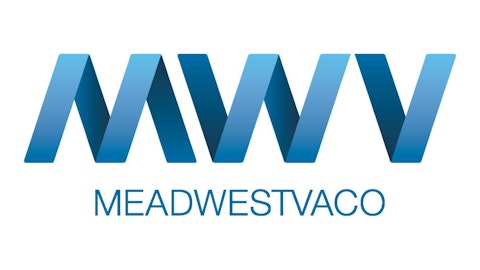As we reported, our multi-gene combination demonstrated a yield advantage of approximately 25% over controls in many of our research-scale field evaluations. These are significant yield gains in a mature crop like corn, or a difference of just a few percentage points are considered positive. We’ve done two years of data, we have now selected our best multi-gene combinations for field evaluations at more locations and at a broader range of corn hybrids in 2015.
I will add my usual caution that results from a research setting are not a guarantee of future conversional performance and further evaluations are going to be necessary to confirm results. We expect to have more conclusive data on the performance of these traits in approximately 10 months following the next set of evaluations. Based on these results and others, we have made a number of observations that impact our development approach and we believe, the broader crop biotech industry.
First, we believe that single plant trans-genes constitutively expressed generally do not work well for agronomic trait in elite hybrid corn germplasm. Multi-gene combinations are key, but not all combinations work. Just as important that promoters, which determine where and when a gene is expressed, are critical. However, testing the thousands of possible combinations for even a handful of genes and promoters can easily overwhelm the most robust trait development pipelines of major crop biotechnology companies and institutes. Therefore, I high throughput system is needed for testing so many combinations.
At Ceres, we believe we have overcome this hurdle. We have developed what we believe is a revolutionary approach for rapidly and empirically evaluating large numbers of promoter gene and gene-gene combinations. We refer to this proprietary multi-gene trait development system as Intelligent Combinatorial Optimization and Directed Evolution or iCODE for short and we are deploying it internally.
We also believe there may be opportunities to out-license iCODE to other crop biotechnology companies. Due to the efficiency of this system, we believe that it can enable them new kinds of discoveries, stock function innovations and performance and allow even smaller research programs to compete effectively against larger companies. But there is another exciting area for both value creation and intellectual property creation. We have filed a patent application for iCODE and are exploring ways to monetize this technology.
In addition to hybrid corn, we are looking forward to collecting results from the first sugarcane trials with our biotech traits in South America. We expect to collect sugar yields and other performance data from the first half of this calendar year as the first growing cycle is completed. These pilot-scale field evaluations include a number of our leading traits for high sugar and drought tolerance. We will be measuring the performance of our traits in leading commercial varieties with a goal of adapting the best plants for broader evaluation. Higher sugar yields and greater resilience to drought and other stress conditions will not only increase output, but also lower production cost for producers.
When the process of gathering preliminary data from these sugarcane trials this week, we’ve done visual inspections, trends with our biotech traits are already demonstrating differences to the control plants similar to what we have previously recorded in the greenhouse. Further there are still a number of much of growing time ahead and sugar yields will of course be the key milestone in this program.
In addition to our trait development, we continue to market our bioinformatic software product named Persephone. Bioinformatics is a large market and it is expected to grow several fold in coming years driven by low cost DNA sequencing. We believe that our direct experience using Persephone internally and our ability to continually develop and launch new versions will enable us to further establish our market position in life sciences and expand it to new markets such as bio-medical research and diagnostics.





